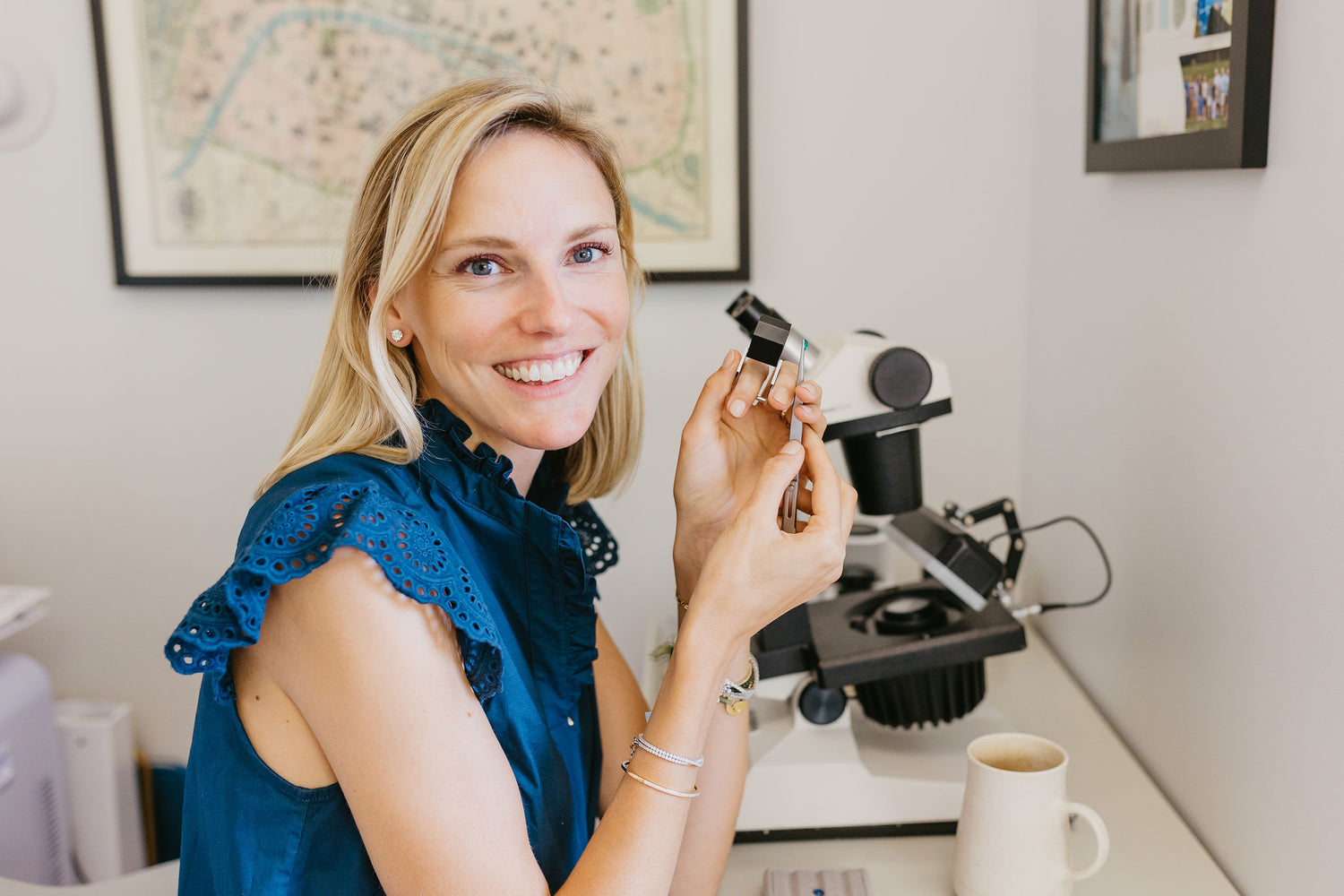Here are 11 fast facts to wow your friends with about everyone's favorite gemstone (and April's Birthstone!) - diamonds!

No. 01
Diamonds are attracted to grease! When mining for diamonds, huge processors actually sift through rock and debris to find diamonds using grease belts. The diamonds stick to the belt and the other debris fall away. This is also why you should never touch the face of your diamonds (or try not to!), as diamonds will hold the oils and grease from your fingers and will impact the brilliance of your diamond. Take your diamond ring on and off by the shank or band, not by gripping the center stone.
No. 02
One of the best and simplest ways to clean your diamonds is with a soft bristled toothbrush and dish soap (I like Dawn!). The dish soap will do exactly what it does to your dishes - cut through grease and grime. The toothbrush does what it does to your teeth - hits all the nooks and crannies. No floss needed ;)
No. 03
A round brilliant diamond has 57 or 58 triangular and kite shaped facets. 33 above the girdle (the flat section that seemingly joins the two parts of a diamond together) and 24 or 25 below the girdle (dependent on whether there is a culet or not). These facets help to hide inclusions through their reflections and refractions.
No. 04
Step cut diamonds have rectangular and square facets that are reminiscent of a hall of mirrors. Think asscher cut diamonds and emerald cut diamonds... They show their internal characteristics more than their brilliant cousins.
No. 05
The first rough diamond found in Africa was a child's toy. At approximately 21 carats rough, a 15 year old boy found the "pretty pebble" and took it home to his younger sister to play with. It was eventually cut into a 10 carat oval brilliant diamond.
No. 06
Cecil Rhodes, de Beers founder, died at age 48 and left his fortune to Oxford University. If you've ever heard of Rhodes Scholars - these are scholars that receive scholarships from Cecil Rhodes' generous donation.
No. 07
Diamonds are forever. Not only are they the symbol of everlasting love, but they are the hardest material on Moh's Hardness Scale. They are perfect for daily wear.
No. 08
DeBeers spends between 70 and 90 million dollars annually exploring potential mines. Once a location is found, much research is put into it to decide if the diamonds will be good enough quality to mine to justify investing in a mine. The diamonds that are mined today were created in the earth's crust over 20 million years ago. As I always say, Mother Nature cooks in a messy kitchen, and not all diamonds that come out of the ground are beautiful.
No. 09
Speaking of beautiful diamonds, 95% of diamonds have some nitrogen in their crystal structure. Nitrogen is the trace element that causes diamonds to have a yellowish or brown tinge. The less nitrogen a diamond has in its crystal structure, the "brighter" the diamond, and consequently, the more rare it becomes. Truly colorless diamonds are very rare, making them collectors stones and driving value up.
No. 10
The rarest diamond color is red, followed by blue and green. Yellow and brown are more common (see #9). The deeper the saturation, the more valuable the diamond becomes. Some diamonds can be treated to create color, so make sure you always have a GIA report when buying a diamond. However, if it is a naturally fancy colored diamond, it is incredibly rare. The Argyle Mine in Australia which was famous for pink, red and some brown diamonds recently closed because mining was no longer profitable. This is going to drive those fancy colored prices up even higher.
No. 11
Uncut diamonds appeared in Europe around 4th Century B.C. when Alexander the Great began traversing the continent. India was the only diamond producing country, and diamonds were less desirable and subsequently less popular than ruby and sapphire. It wasn't until the mid 1300s when people started fashioning and cutting diamond rough that they began to gain momentum.

